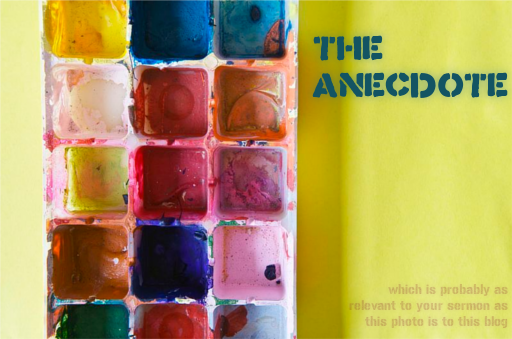We like sport. We just put our own twist on it. Here’s what the Christian heptathlon looks like (with links to the event that was the inspiration for it).

Photo: AdamKR, reused under CC License
- Bible hopping: quote as many separate and short Bible verses as possible to support an argument. Bonus points for quoting non-standard verses, especially genealogies or the minor prophets. In this contest, speed is of the essence: you do not want whichever passage you’re using to support your argument to actually speak to your listeners directly. Careful, some passages may trip you up, so never stray far from your usual turf.
- Triple point: write any talk or sermon in a three-point structure. Bear in mind that these points should not be considered in any way that would allow anyone to continue after your work; and that if a four-point or two-point structure were better suited to your argument, such a work would be disqualified.
- Javelin: use your talk, sermon or other document as a way to attack The Others – be it in terms of theological viewpoint, or in terms of societal issues. Current issues are disqualified, particularly shortly after schisms, where such attacks are far too easy. The Baptists made a commendable effort in 1689, but this effort was not homologated due to the circumstances at the time. You may wish to train by defending your church as opposed to other churches, and move on to a dissing of low/high churches (delete as appropriate) before mocking other doctrinal points.
- Conceptual hammer throwing: talk about predestination, transubstantiation, cessationism or any other particularly heavy theological topic without explaining what it means, and with no other reason than that you like the sound of your own voice on that matter.
- 1500s run: only use one theological reference from the 16th Century to inform your thinking – usually the Puritans. Also exists in other eras (100s run is particularly popular these days)
- Sermon throw: make your sermon as far removed as possible from the text from which you’re meant to be preaching. This sport is commonly confused with the practice of throwing the sermon as far as possible from any form of relevance to the audience’s lives.
- Service marathon: make sure everybody is keeping their Sunday holy by keeping them in church a minimum of 6 hours. Techniques include: readings which span many chapters; repeated verses and/or instrumentals and/or wo-ohs in hymns and worship songs; organ voluntaries put in the middle of the service; and, most easily, sermons with a minimal length of oner hour. Fringe improvements can be made by making sure that no one knows when their part is – this technique is particularly helpful with dramatised tellings of Bible stories.
Athletes competing in these will be checked for inhalation of incense.
—
In these especially, the first will be the last.
Add your own!




